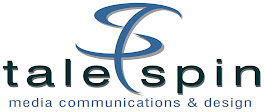When you work on your own it can be hard to get answers to some common questions: Are my marketing efforts effective?
How can I improve my marketing?
Am I doing it right?
‘Flying solo’ can be lonely and it’s important that we are not secretive about information that can help others. We need to share ideas and best practice so that we can seize all opportunities and grow.
Entrepreneurs are often cash-strapped and have limited resources so we do as much as possible ourselves, scrutinize every cost and make sure we are getting value for money for every marketing rand spent.
If you are doing ‘DIY marketing’, then maximize your initiatives and make them work for you. Increase their effectiveness by ensuring that you apply all the tricks of the trade and get the most out of everything you do.
One of the cost-effective tactics you may decide to employ is a Public Relations and/or publicity campaign. It will boost your visibility, credibility and generate awareness of your product or service which is critical for start-ups and entrepreneurs. But, how can you get more from your PR and publicity efforts?
In PR, well written press releases have their place so aim to get the most out of them. Here are some tips and suggestions:
• Focus on connecting with your customers and provide them with newsworthy information. No brag copy please – this is a turn-off for the reader and journalist looking to publish a story.
• Make sure your article is optimised for publication on websites and e-zines even if you are only intending to submit to print media. You can do this by including keywords/phrases in the body-copy - typically they are between 1 and 6 words long. Most publications (if not all) have websites which carry the same content as the printed versions and if your article is used it will be published on both. So in makes sense to ensure that your release incorporates the right keywords as it helps the search engines to find you.
• Choose keywords and phrases that your clients will use to search for your product or service using the world-wide-web. When selecting keywords it is important to think like your target audience and not like an expert or someone well versed in your industry. There are special tools on the web that help marketers find keywords. They are called keyword research tools. Some free ones are Google Keyword Tool, SEOChat and Wordtracker.
• Sign-up for a press-office with a website/portal that serves and interacts with your target audience. Journalists often access websites for information for articles or pull stories directly from press-offices for publication. So make sure they find your article.
• A professional press release which is well presented is important. When attributing quotations to a person in a release cut out the first-name familiarity. It may look nice to you but, to a journalist it looks out of place. Ultimately it will jar with the news-desks of credible newspapers and magazines.
PR can turn you from a nobody into a somebody who can compete with bigger businesses. The credibility factor speaks volumes and it is cost effective. For example, compared to print advertising where you only get one placement in a local paper or magazine for your money (lets say R5000.00) the same amount spent on PR if you get coverage in several magazines/newspapers and websites can mean the equivalent of 5 to 10 times the advertising cost in those publications.
PR is hard-work, time-consuming and comes with no guarantees, but is well worth the effort and investment.
Tale Spin is a below-the-line marketing communications agency. We formulate and implement communication strategies that support the brand, sales and corporate objectives of our clients.
PR is our core competence, yet our service offering covers all aspects of marketing and communication.
PR is our core competence, yet our service offering covers all aspects of marketing and communication.
Thursday, April 30, 2009
TIPS FOR WRITING A DIY PRESS RELEASE
Labels:
DIY press release,
keywords in a release,
PR,
value-add,
writing tips
Subscribe to:
Post Comments (Atom)



No comments:
Post a Comment
Note: Only a member of this blog may post a comment.